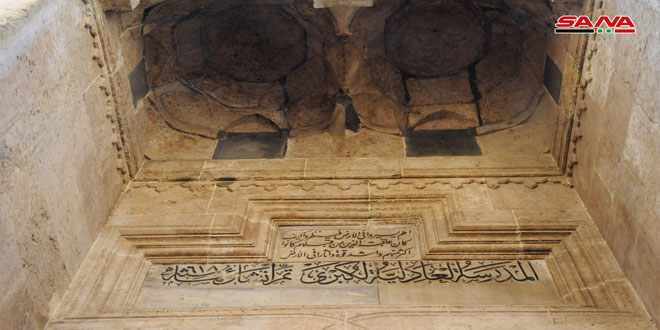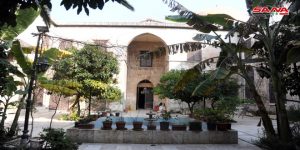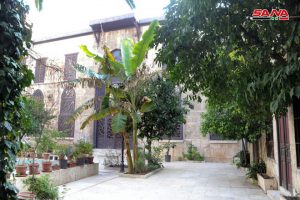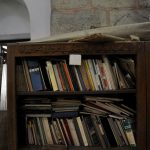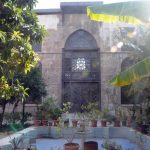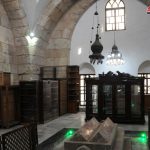Damascus, SANA _ Al-Adiliyah Madrasa (school) is an integrated architectural building, as described by dozens of writers and historians in their articles and studies, and one of the oldest and most famous archaeological and cultural landmarks in Damascus.
Nour al-Din al-Zenki, laid the first stone for the school which dates back to 1225 AD, but he died before the completion of the building, according to Director of the Madrasa Anwar Darwish.
The Ayyubid-era school named after al-Malek al-Aadel (The Just King) who continued its building; he died before the completion of the building and was buried in Damascus Castle.
Al-Malek al-Moazzam ( the Exalted King), the son of al-Malek al-Aadel finished the project to serve as a mausoleum for his father.
The historical importance of the Madrasa and its archaeological structure lies in its architectural style, which belongs to the Ayyubid architecture in Damascus.
Throughout its long history, the Madrasa was a destination for great Arab scholars, historians and writers of ancient and modern times such as Ibn Khaldun, Abu Shama, Ibn Khallikan, Ahmed Shawqi , Khalil Mutran, Hafez Ibrahim, Mohammed Kurd Ali, Omar Abu Risha and Shafiq Jabri and others.
The 2-storey Madrasa consists of large halls and a large courtyard . It is a rather austere structure, built from large limestone blocks with little noteworthy ornamentation on the facades.
The exception is the entryway on the eastern facade, which features a large iwan extending nearly the full height of the structure. The iwan is topped by two stone vaults that culminate in a hanging keystone, dividing the iwan into two arches.
The iwan is enclosed with two small stone muqarnas domes. A large doorway is framed by alternating black and white stone blocks, above which are stone-carved decorative features and a marble panel of Arabic inscriptions.
The entry portal leads into a courtyard that measures eighteen by seventeen meters, featuring a square fountain in the center.
The monolithic facades are constructed from limestone blocks. These blocks are plain without any ornamentation forming monumental facades without windows and a thick unadorned cornice.
The main gate is unique in design when compared to other Ayyubid examples, a large iwan as high as the facade covered with two stone vaults that culminate in a hanging 2.2 m long keystone.
The Madrasa was founded for paying attention of the Arabic language in which al-Malek al-Moazzam was fond of, Darwish said.
It was a destination to well-known intellectuals and figures as there was a place for residence of students who visit the Madrasa .
Al-Adiliyah Madrasa was destroyed and burned several times during the Tatar attacks and in every time, it was restored.
Darwish added: “The Arabic Language Academy in Damascus, founded in 1919, revived Al-Adiliyah library and took it, along with the National Museum, as its headquarter until 1934 where it moved to its current building.
The Madrasa was subjoined to Az-Zahiriyah library where a part of books was stored for opening more halls for offering wider service for readers; later it became a complementary building to Az-Zahiriyah library.
Work in the Madrasa is currently based, as a first stage, on recording and restoration of books while awaiting the opening of Az-Zahiriyah library to be returned to it.
https://www.youtube.com/watch?v=Ov0HGfbI6xw
Gh.A.Hassoun
 Syrian Arab News Agency S A N A
Syrian Arab News Agency S A N A
